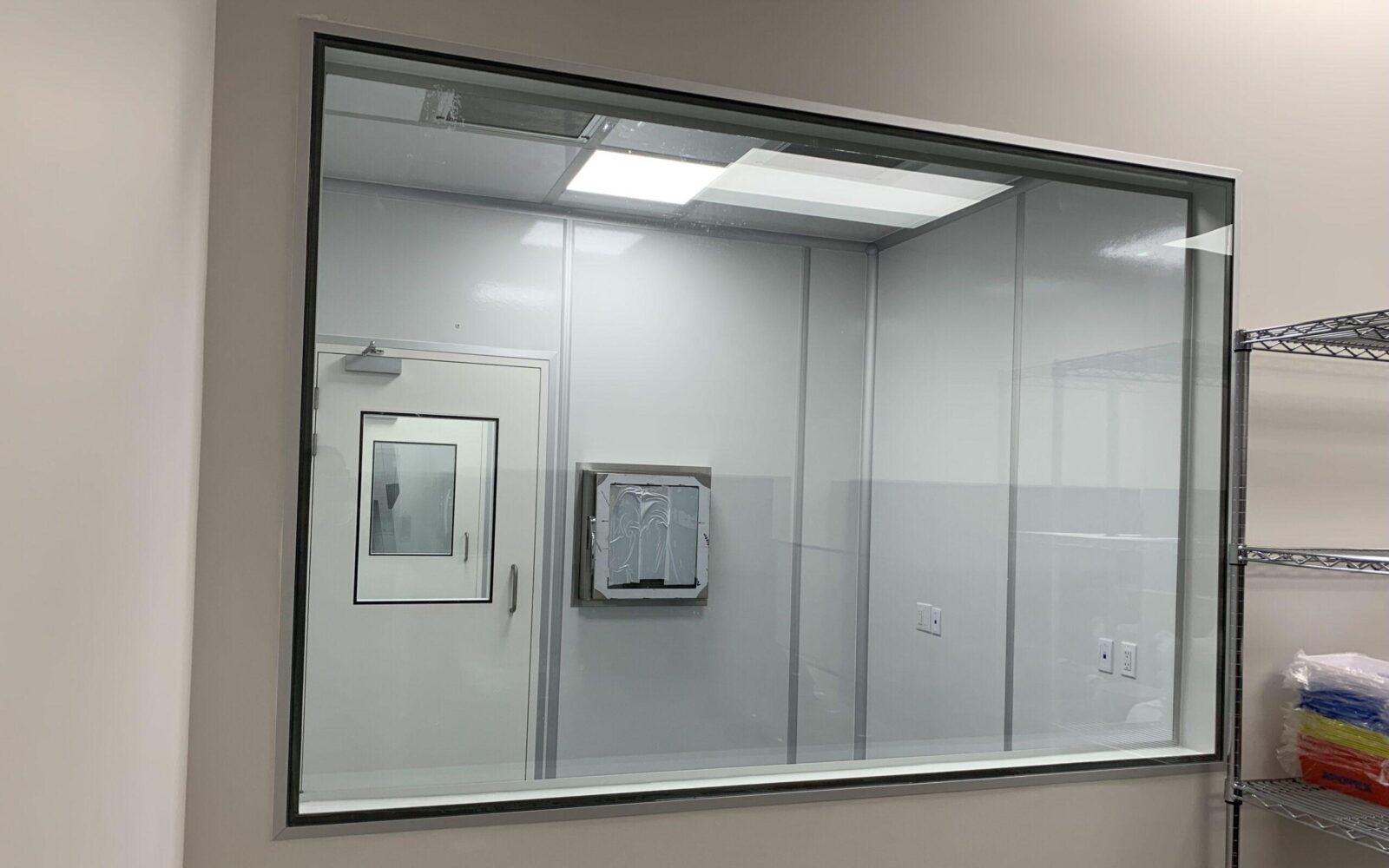An Insider Look: Passbox vs Airlock

Passbox and airlock are two types of controlled environments used in various industries to prevent contamination during material transfer between different areas. While they serve similar purposes, there are some key differences between the two.
Passboxes and airlocks are primarily distinguished by their sizes and use in clean room applications. Airlocks are bigger and are used to manage the passage of people and larger things into and out of the cleanroom. On the other hand, passboxes are smaller and are primarily used to transfer small items into and out of the cleanroom.
What is a Passbox?

A passbox, also known as a transfer hatch or transfer chamber, is a small enclosure with two doors that is used to transfer materials or items between two areas of different cleanliness levels. It is typically built into a wall or partition, allowing the transfer of materials without compromising the integrity of the controlled environments on either side. Passboxes are primarily used in cleanrooms, laboratories, or other controlled environments where maintaining cleanliness is crucial.
Passboxes are frequently composed of Stainless steel, Galvanized or PVC and may have an anti-static or anti-microbial coating. They may also be built with UV lamps to destroy microbes, as well as HEPA filters to eliminate airborne contaminants. Passboxes include interlocking doors, which minimize the chance of contamination by preventing both doors from being open at the same time.
Key Features of a Passbox
| Feature | Description |
|---|---|
| Two Doors | Passboxes have two doors, one on each side, which are interlocked to prevent both doors from being opened simultaneously. This ensures that only one door can be opened at a time, minimizing the risk of cross-contamination between the two areas. |
| Size | Passboxes are usually small in size and are designed for the transfer of smaller items or materials rather than personnel. |
| Unidirectional Flow | Passboxes typically have a unidirectional flow of air to maintain the pressure differentials and prevent contamination. Air is generally supplied through HEPA filters to ensure cleanliness during material transfer. |
What is an Airlock?

An airlock, also known as a cleanroom airlock or personnel airlock, is a more substantial enclosure that allows for the controlled transfer of people, equipment, or larger items between areas of differing cleanliness levels. Airlocks are commonly used in cleanrooms, pharmaceutical manufacturing facilities, and other environments where maintaining strict contamination control is essential.
Key Features of an Airlock
| Feature | Description |
|---|---|
| Three or More Doors | Airlocks typically have three or more doors arranged in a sequence, forming a buffer zone between two areas. This design helps to maintain pressure differentials and prevent the direct flow of contaminants from one area to another. |
| Size | Airlocks are larger than passboxes and can accommodate personnel, equipment, or larger items, depending on their intended use. |
| Airflow Control | Airlocks employ more complex airflow systems, such as interlocking doors, air curtains, or air showers, to minimize the introduction of contaminants during personnel or material transfer. |
| Controlled Environment | Airlocks often have more advanced environmental control systems, including temperature, humidity, and pressure control, to ensure the appropriate conditions for personnel or equipment transitioning between areas. |
Benefits of Airlocks
Airlocks are used in cleanroom environments to provide a controlled and sealed transition between different cleanliness zones, helping to maintain the integrity of the controlled environment. The main benefits of using airlocks in cleanrooms include:
- Contamination control: Airlocks help to minimize the introduction of contaminants into the cleanroom by providing a physical barrier between the cleanroom and the surrounding environment.
- Efficient gowning procedures: Airlocks can facilitate a more efficient gowning procedure by reducing the need for frequent gowning and un-gowning procedures, reducing the amount of time spent in the gowning area and minimizing the risk of contamination.
- Reduced air exchange: Airlocks reduce the amount of air exchange between the cleanroom and the surrounding environment, helping to maintain a controlled level of cleanliness and prevent the introduction of contaminants.
- Improved process integrity: By maintaining a controlled level of cleanliness and reducing the risk of contamination, airlocks help to improve the integrity of sensitive processes, such as the production of electronics, pharmaceuticals, and biological products.
It’s crucial to remember that passboxes and air locks are necessary to preserve the cleanroom’s integrity and prevent contamination. Air locks are normally found at the facility door, whereas passboxes are often found at the cleanroom entry. Both kinds of constructions must be created, maintained, and repaired in accordance with applicable rules and laws.
In summary, while both passboxes and airlocks are used for the controlled transfer of materials, passboxes are typically smaller, designed for the transfer of smaller items, and have two doors. Airlocks are larger, designed for the transfer of personnel and equipment, and have three or more doors with more advanced environmental control systems.
GET IN TOUCH
Complete the form below to get in touch with our team.
